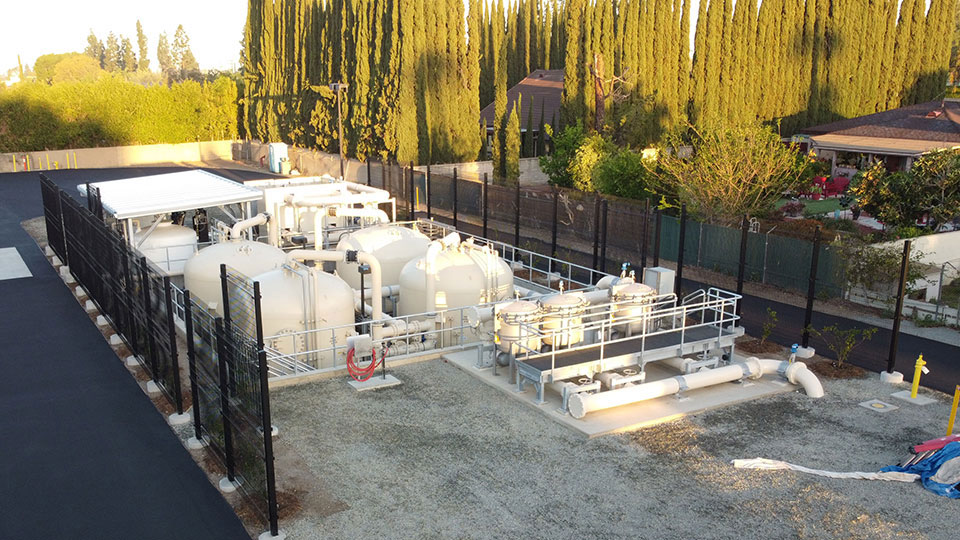M270 PFAS Treatment for Rapid Removal of Contaminants
M270 PFAS Treatment for Rapid Removal of Contaminants
Blog Article
Cutting-edge PFAS Therapy Solutions for Safer Water
The boosting occurrence of PFAS contamination in water supplies necessitates a vital evaluation of innovative therapy remedies. Advanced purification innovations and unique chemical treatments existing appealing opportunities for decreasing these persistent pollutants. Furthermore, emerging bioremediation methods provide an even more lasting method to tackling PFAS challenges. As regulative frameworks continue to adjust, comprehending the effectiveness and scalability of these solutions becomes vital. What implications do these innovations hold for public health and ecological remediation, and just how can stakeholders effectively execute them in varied contexts?
Summary of PFAS Contamination
PFAS contamination has actually become a considerable environmental and public health and wellness issue. Per- and polyfluoroalkyl materials (PFAS) are a group of artificial chemicals recognized for their persistence in the atmosphere and body, leading them to be frequently described as "forever chemicals." These substances have actually been commonly used in various sectors, including firefighting foams, water-repellent textiles, and food product packaging, mostly due to their water- and grease-resistant residential or commercial properties.
The widespread use PFAS has resulted in their detection in dirt, water products, and also in the blood of people and animals. Studies have connected PFAS direct exposure to many health and wellness issues, including developing results in babies, immune system dysfunction, and various kinds of cancer cells. Furthermore, the environmental determination of these compounds complicates their destruction and elimination, increasing concerns concerning lasting environmental effects.
Regulatory bodies are significantly applying rigid guidelines to monitor and reduce PFAS degrees in drinking water and other ecological tools. As understanding of PFAS contamination grows, it has become vital for neighborhoods and industries to seek effective therapy services to reduce exposure and secure public health and wellness.
Advanced Filtering Technologies
As the urgency to deal with PFAS contamination heightens, advanced filtering technologies have arised as a crucial part in the removal efforts focused on removing these relentless chemicals from water resources. These innovations leverage sophisticated devices to efficiently target and record PFAS compounds, which are infamously immune to conventional treatment approaches.
One of the most appealing approaches is using granular turned on carbon (GAC), which adsorbs PFAS particles due to its high surface and permeable structure. This technique has actually been widely executed in both local and commercial settings, demonstrating considerable decreases in PFAS focus. In addition, ion exchange materials have acquired traction, especially developed to selectively bind PFAS ions from water, therefore promoting their elimination.
Membrane layer purification technologies, such as reverse osmosis and nanofiltration, also show effectiveness in PFAS elimination by literally dividing impurities from water - pfas management. These systems can attain high degrees of pureness, making them ideal for drinking water applications
Chemical Treatment Developments
Various chemical treatment advancements are being discovered to properly resolve PFAS contamination in water supplies. One promising technique includes using innovative oxidation procedures (AOPs), which make use of effective oxidants such as ozone, hydrogen peroxide, or chlorine dioxide combined with UV light to damage down PFAS substances into less dangerous materials. This method has demonstrated efficiency in laboratory setups, revealing prospective for scalability in real-world see here now applications.
Another ingenious approach is the development of ion-exchange resins especially made to target PFAS. These materials can uniquely adsorb PFAS compounds from water, allowing for their elimination throughout therapy procedures. Current developments have actually boosted the efficiency and ability of these resins, making them a positive alternative for water therapy centers.
Additionally, scientists are exploring using chemical representatives like persulfate and ferrous ions to improve the deterioration of PFAS in infected water. These representatives can induce chain reaction that help with the malfunction of consistent PFAS compounds.
Emerging Bioremediation Strategies
Current advancements in chemical therapy developments have actually paved the way for checking out bioremediation strategies as a feasible alternative for resolving PFAS contamination. Bioremediation harnesses the all-natural metabolic processes of bacteria to weaken or change contaminants, making it an attractive approach for taking on persistent pollutants like PFAS.
Emerging techniques in bioremediation consist of making use of genetically engineered microbes that can especially more info here target and damage down PFAS compounds. These microbial strains are being established for their enhanced deterioration capabilities, boosting the performance of the removal procedure. In addition, researchers are checking out the capacity of plant-assisted bioremediation, where certain plant types may uptake and sequester PFAS from contaminated dirt and water.
Another appealing approach is the application of bioaugmentation, which includes presenting advantageous microbes right into polluted settings to improve the degradation of PFAS. This approach can help with quicker remediation timelines and improve overall efficiency.

Regulative Structures and Specifications
A thorough governing framework is crucial for effectively handling PFAS contamination and ensuring public wellness security. The boosting recognition of per- and polyfluoroalkyl substances (PFAS) as toxic wastes has prompted numerous federal and state agencies to develop criteria that regulate their visibility in water materials. The United State Epa (EPA) has established wellness advisories and is pursuing setting enforceable restrictions for PFAS in drinking water.
State-level laws differ substantially, with some states taking on more stringent standards than those suggested by the EPA. These regulations often consist of maximum impurity degrees (MCLs) for certain PFAS substances, surveillance requirements, and reporting commitments for water energies. Furthermore, arising structures focus on the remediation of polluted sites, stressing the demand for efficient therapy modern technologies.

Verdict
To conclude, the advancement and application of cutting-edge PFAS treatment services are important for attending to the prevalent problem of water contamination. Advanced filtering innovations, chemical therapies, and emerging bioremediation methods jointly provide a multifaceted approach to effectively lower and degrade PFAS levels. As regulative frameworks remain to develop, integrating these technologies will be important to secure public wellness and restore the stability of infected water sources, inevitably adding to a cleaner and much safer setting.
Report this page